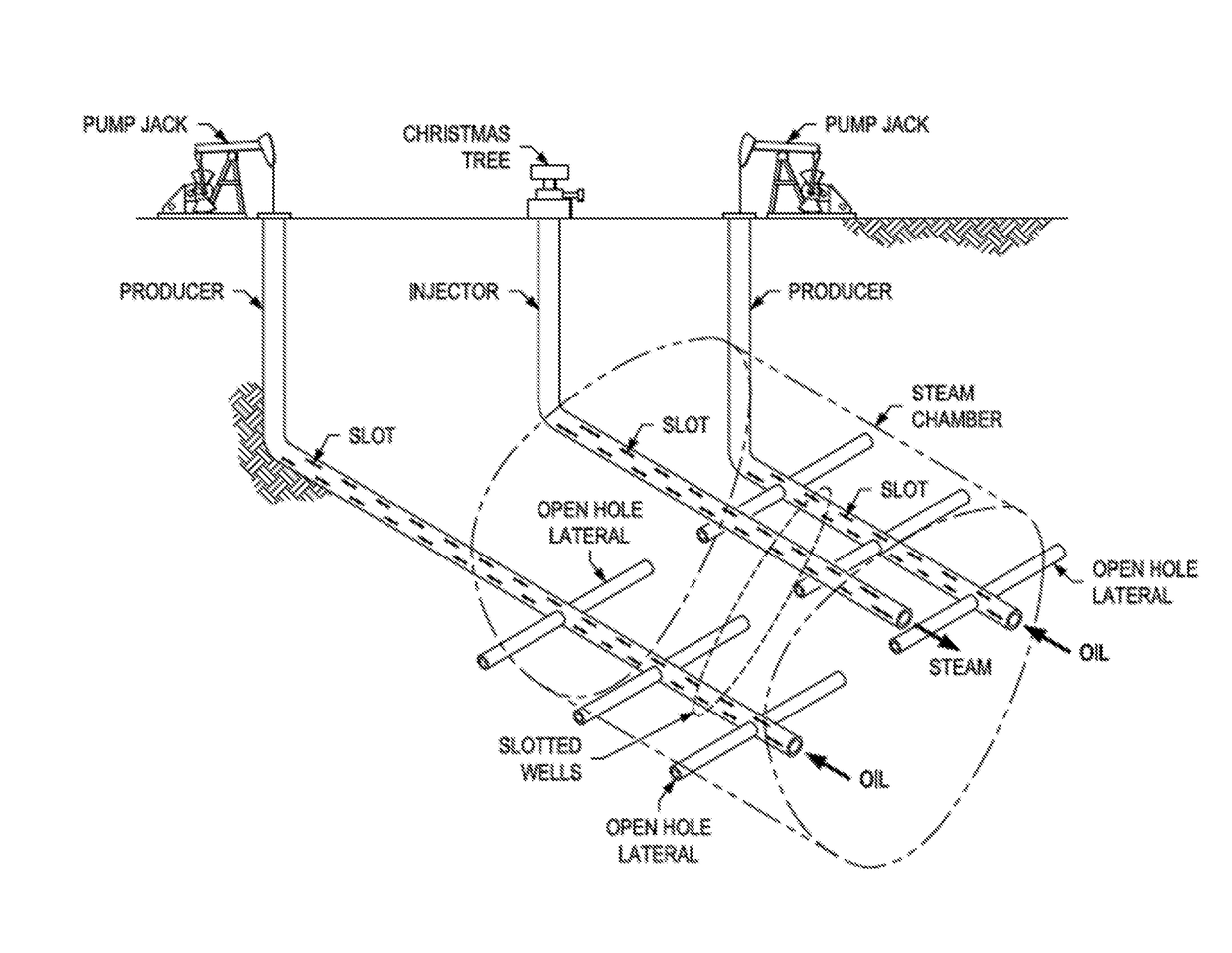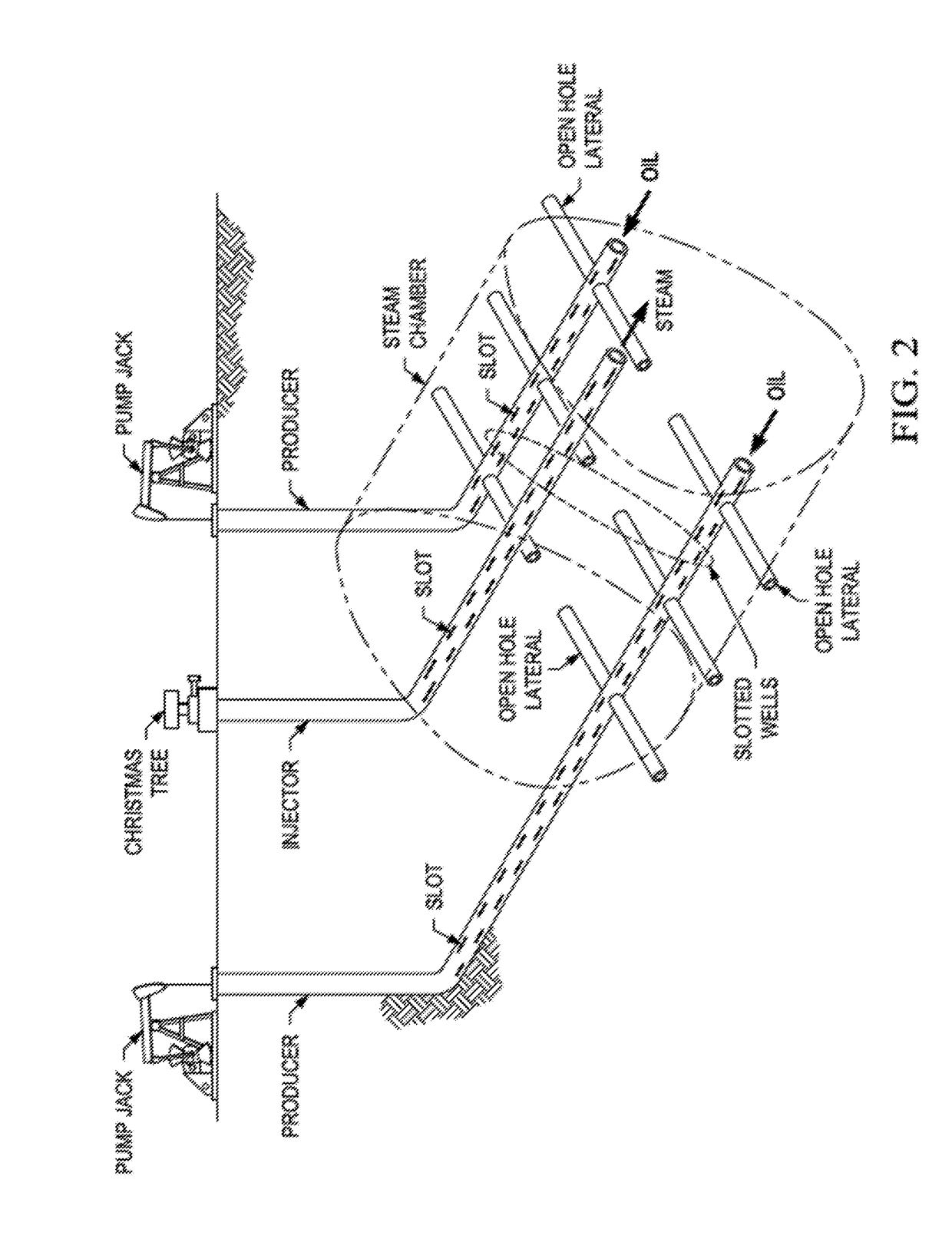Thermal conditioning of fishbones
a technology of thermal conditioning and fishbones, applied in the direction of fluid removal, insulation, borehole/well accessories, etc., can solve the problems of increasing the cost of conversion of those barrels of water to high-quality steam, reducing the environmental and cost impact of technology that can reduce water or steam consumption, and reducing the circulation of conventional steam. , the effect of reducing the development cos
- Summary
- Abstract
- Description
- Claims
- Application Information
AI Technical Summary
Benefits of technology
Problems solved by technology
Method used
Image
Examples
Embodiment Construction
[0102]The following is a detailed description of the preferred method of the present invention. It should be understood that the inventive features and concepts may be manifested in other arrangements and that the scope of the invention is not limited to the embodiments described or illustrated. The scope of the invention is intended to only be limited by the scope of the claims that follow.
[0103]The present invention provides a novel fishbone SAGD method, which uses the “fishbone” SAGD configurations previously described, wherein injectors or producers or both are both fitted with a plurality of multilateral wells, and wherein the fishbones are preheated to mitigate plugging. Once the laterals are preheated and fluid communication is established, the enhanced oil recovery method precedes as normal.
[0104]Although particularly beneficial in gravity drainage techniques, this is not essential and the configuration and methods could be used for horizontal sweeps as well. The well config...
PUM
 Login to View More
Login to View More Abstract
Description
Claims
Application Information
 Login to View More
Login to View More - R&D
- Intellectual Property
- Life Sciences
- Materials
- Tech Scout
- Unparalleled Data Quality
- Higher Quality Content
- 60% Fewer Hallucinations
Browse by: Latest US Patents, China's latest patents, Technical Efficacy Thesaurus, Application Domain, Technology Topic, Popular Technical Reports.
© 2025 PatSnap. All rights reserved.Legal|Privacy policy|Modern Slavery Act Transparency Statement|Sitemap|About US| Contact US: help@patsnap.com



